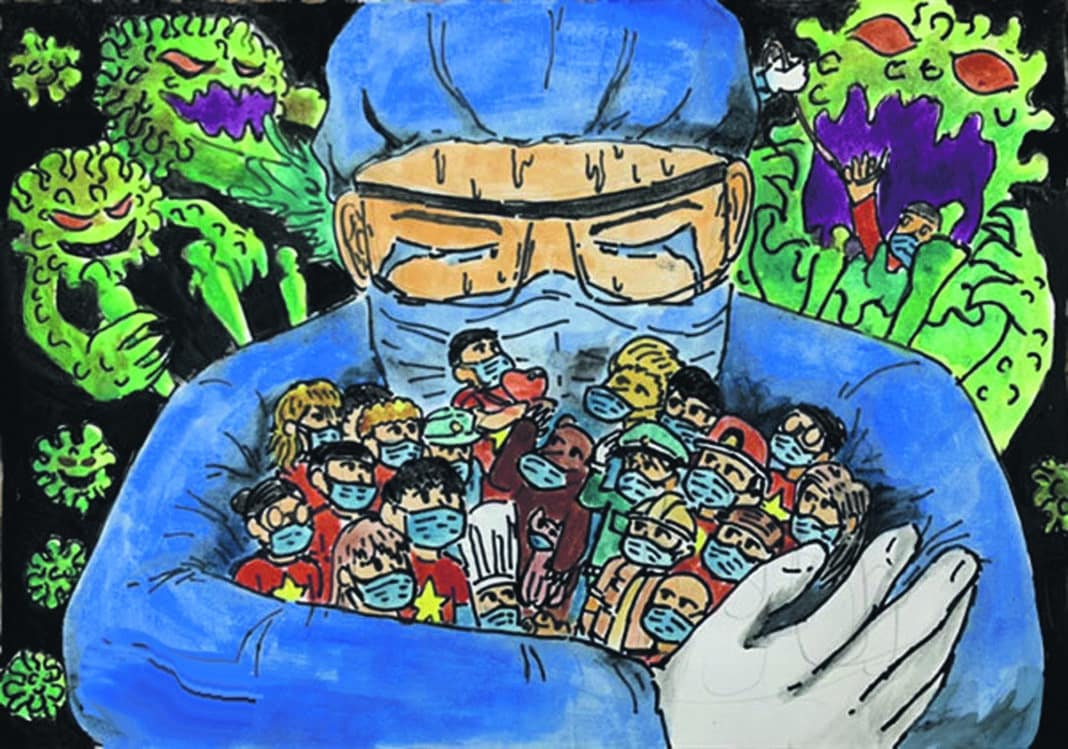 Someone once gave me a useful piece of advice about art. “When you see a Picasso painting of a woman with eyes on both sides of her nose, you know it’s a fake.”
Someone once gave me a useful piece of advice about art. “When you see a Picasso painting of a woman with eyes on both sides of her nose, you know it’s a fake.”
Artists often like to reflect events in their own lives, so I wonder what the art of the present pandemic will look like? Edvard Munch-like Screams? Andy Warhol painting dozens of Campbell’s Soup Cans he has been bulk buying?
Tracey Emin so bored during lockdown that she finally tidies up that unmade bed? Or sketches of exhausted hospital nurses not looking at their best despite the haloes above their heads? I say sketches, because they certainly won’t be sitting still for portraits.
Artists sometimes go to extraordinary lengths to immortalize the moment on canvas. In his quest to remain up-to-date, Salvador Dali included images of atomic particles in his work soon after Hiroshima, and strands of DNA appeared from the mid-1950s. Where his Lobster Telephone came from is anyone’s guess, ordering a taxi in a seafood restaurant after a boozy lunch, perhaps.
In order to depict a storm at sea, Turner had himself tied to the mast of a ship for four hours. I assume the result was a watercolour. In retrospect, the French artist Monet now appears extremely avant-garde in his ambition to “paint the air,” almost as if he anticipated in 1919 that Covid-19 would spread by airborne transmission in 2019.
His fellow countryman Paul Gauguin was once a tarpaulin salesman in Denmark but he couldn’t speak Danish and the Danes disliked French tarpaulins (“Too dry,” they said bizarrely) so he became a painter, as one does. I have never really understood the French, apart from croissants. Did Gauguin use his unsold tarpaulins as canvases, I ask myself.
“A picture is worth a thousand words,” claimed advertising executive Fred Barnard, who was also a painter, no surprise there. The nerve of the man. Artists generally have high opinions of their own work, unlike us humble scriveners. Rembrandt painted his own biography in 80 self-portraits, sometimes rising before dawn to start work — he had a night watch on his bedside table, which he also painted. His son Titus died during the plague of 1668.
When Rubens was Holland’s ambassador to Spain, he spent the afternoons at his easel, and one day a member of the Spanish court said to him, “I see the diplomat amuses himself sometimes with painting.” To which Rubens replied, “No, the painter amuses himself sometimes with diplomacy.”
I don’t envy any modern artist trying to put our plague down on canvas. Would a microscope be involved? How do you make a coronavirus stay still long enough to capture its likeness — by which time it has probably reinvented itself as another variant anyway? Easier to paint David Bowie. Or Dr Jekyll. Or almost any politician.
Best stick, perhaps, to art for art’s sake, as 10cc often advised us musically. It’s got to be less trouble than painting a pandemic, and at least your completed canvas won’t curl up and die. Or dry, if it’s painted on tarpaulin.





